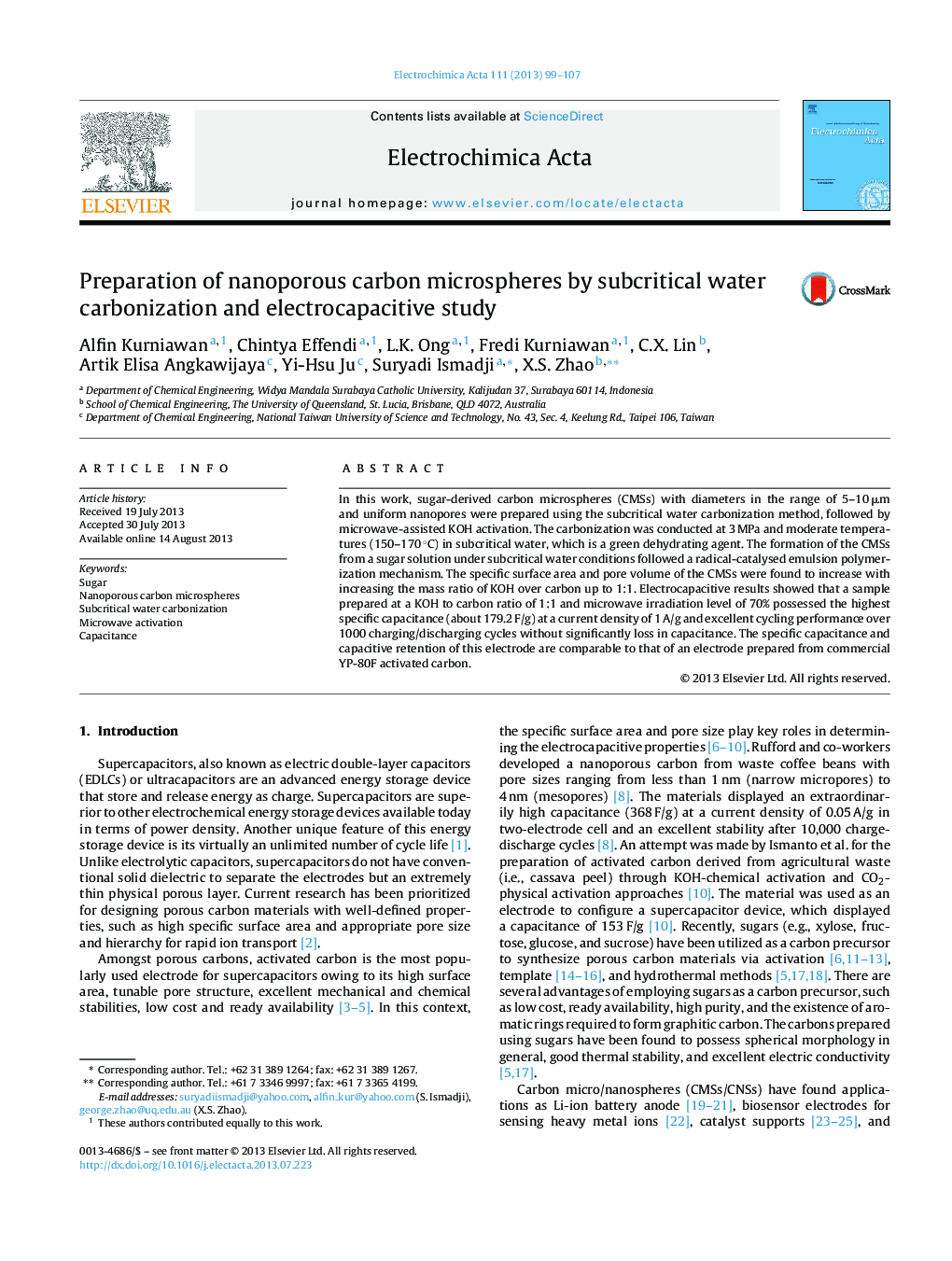| Article ID | Journal | Published Year | Pages | File Type |
|---|---|---|---|---|
| 186602 | Electrochimica Acta | 2013 | 9 Pages |
In this work, sugar-derived carbon microspheres (CMSs) with diameters in the range of 5–10 μm and uniform nanopores were prepared using the subcritical water carbonization method, followed by microwave-assisted KOH activation. The carbonization was conducted at 3 MPa and moderate temperatures (150–170 °C) in subcritical water, which is a green dehydrating agent. The formation of the CMSs from a sugar solution under subcritical water conditions followed a radical-catalysed emulsion polymerization mechanism. The specific surface area and pore volume of the CMSs were found to increase with increasing the mass ratio of KOH over carbon up to 1:1. Electrocapacitive results showed that a sample prepared at a KOH to carbon ratio of 1:1 and microwave irradiation level of 70% possessed the highest specific capacitance (about 179.2 F/g) at a current density of 1 A/g and excellent cycling performance over 1000 charging/discharging cycles without significantly loss in capacitance. The specific capacitance and capacitive retention of this electrode are comparable to that of an electrode prepared from commercial YP-80F activated carbon.
Graphical abstractFigure optionsDownload full-size imageDownload as PowerPoint slide
